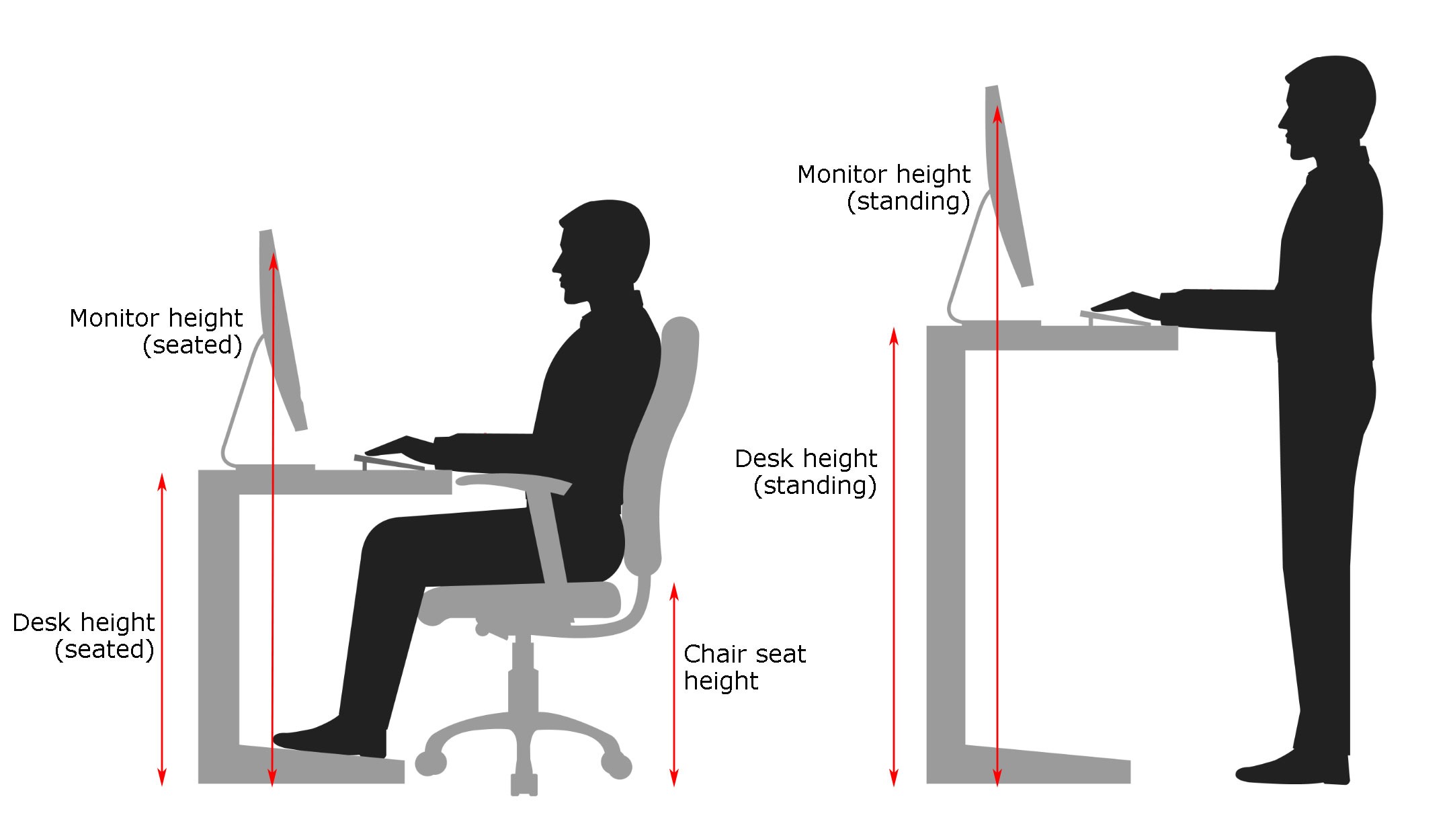Ideal Chair Height for Desk Work: What Height Chair For Desk

Finding the perfect chair height for your desk setup is crucial for comfort and preventing long-term health issues. It’s not just about feeling comfortable; it’s about optimizing your posture and reducing strain on your body throughout the workday. Getting this right can significantly impact your overall well-being.
What height chair for desk – The ideal chair height is intrinsically linked to your desk height and your own body measurements. The goal is to achieve a posture where your feet are flat on the floor, your thighs are parallel to the ground, and your elbows are bent at a 90-degree angle while typing. This ensures your spine maintains its natural curves, minimizing stress on your back, neck, and shoulders. Adjusting your chair height incorrectly can lead to a cascade of problems, from minor discomfort to serious health complications.
Ergonomic Benefits of Chair Height Adjustments
Proper chair height adjustment offers a multitude of ergonomic advantages. By aligning your body correctly, you reduce the strain on your musculoskeletal system. This minimizes the risk of developing repetitive strain injuries (RSIs), such as carpal tunnel syndrome, and prevents the development of chronic pain conditions like back pain and neck pain. The improved posture also promotes better blood circulation, leading to increased energy levels and focus throughout the workday. Conversely, an improperly adjusted chair height can force your body into unnatural positions, increasing the risk of these issues.
Ideal Chair Height Based on Desk and User Height, What height chair for desk
The following table provides a guideline for determining the ideal chair height based on desk height and user height. Remember these are guidelines, and individual adjustments may be necessary.
| Desk Height (inches) | User Height (inches) | Ideal Chair Height (inches) | Ergonomic Considerations |
|---|---|---|---|
| 28-30 | 60-65 | 17-19 | Ensure feet are flat on the floor. May need a footrest if chair is too high. |
| 28-30 | 65-70 | 19-21 | Maintain 90-degree angle at elbows. Adjust lumbar support as needed. |
| 30-32 | 60-65 | 18-20 | Monitor for slouching; adjust chair height and lumbar support to maintain proper posture. |
| 30-32 | 65-70 | 20-22 | Consider a chair with adjustable armrests for optimal elbow support. |
Health Problems Associated with Incorrect Chair Height
Sitting for prolonged periods with incorrect chair height can lead to a variety of health problems. Improper posture puts excessive strain on the spine, leading to back pain, often in the lower back. This can also cause neck pain and headaches as the body compensates for poor posture by straining the neck muscles. Furthermore, incorrect chair height can contribute to eye strain, as poor posture forces the head and neck into unnatural positions, affecting the eyes’ ability to focus comfortably. In severe cases, these issues can lead to chronic pain, reduced mobility, and decreased productivity. For example, a consistently slouched posture can compress the intervertebral discs in the spine, leading to long-term back problems. Similarly, straining the neck to maintain eye contact with a screen placed too high can result in chronic neck pain and headaches.
